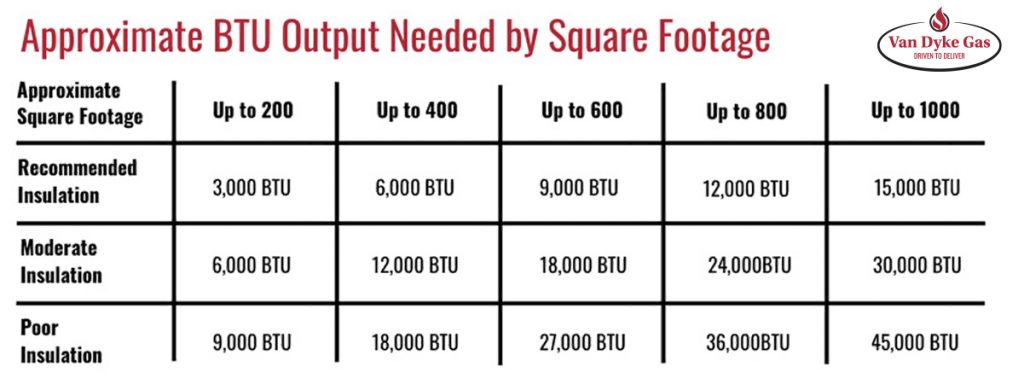With the impending winter chill upon us, you’re probably looking for the best solution to heat those chilly workspaces like your barn, garage, or hunting blind.
Portable propane heaters are a cost-effective, energy-efficient and reliable alternative for providing temporary heat to drafty sheds, shacks, and other ventilated spaces where electricity isn’t a feasible option. There are a few key details you need to know when it comes to staying safe and warm when using propane heaters in an indoor space. Read on to learn more.
Types of Propane Heaters
There are a variety of propane heaters on the market, and you should know the difference between the two types before making a purchase:
Vent-Free Heaters
Vent-free, or ventless heaters are in-room heaters that do not vent air to the outside of a space. Rather, the oxygen that is needed to fuel the combustion process is acquired from the air inside the space – resulting in the heat being vented out from the unit.
Pros
- Quick installation because no venting is needed
- Most units don’t require electricity to run unless a blower is added
- Units will continue to operate should there be a power outage
- Quiet, easy to use and efficient (most units available now are 99% efficient)
- Vent-free units were designed to heat single rooms and additions while reducing home heating cost
Cons
- No chimney or exhaust, so when the unit is located in the space being heated you run the risk of depleting the air within that room
- Must be approved for indoor use
Vented Heaters
Vented heaters, unlike vent-free heaters, are typically installed on the outside of a space’s wall. These vents then pull air from the outside and exhaust it back outside.
Pros
- Come in many different shapes and sizes similar to the vent-free units
- Units are vented out from the back into a chimney or a vent pipe so the combustion exhausts are directed outside
- Some states and local codes only allow vented units within a home
- Almost always approved for indoor use
Cons
- Not as easy to install as the vent-free unit
Due to the ease of installation, many consumers choose to use vent-free heaters. However, when using a vent-free heater it is important that is be approved for indoor use. An unapproved heater used in an indoor space may increase the risk of carbon monoxide poisoning. Units that are approved for indoor use will come with an oxygen depletion sensor (ODS), which will immediately stop gas flow to the burner if it detects unsafe oxygen levels. Even if your heater is equipped with an ODS, you will need air filtration within that room or space.
Sizing the Correct Heater for a Room
As you select a heater for your space, it’s important that you size it appropriately. An undersized heater will not heat the room to the desired temperature, while an oversized heater may not function properly – you run the risk of your heater producing a large amount of carbon emission for the room size and potentially shutting down – leaving you out in the cold.
Below is an approximation chart to help assist in finding the correct size heater:

When selecting a heater, it’s important to contact a professional like Van Dyke Gas to ensure you are sizing it correctly.
Using a Propane Cylinder Indoors
According to the NFPA 58 Liquefied Petroleum Gas Code, propane gas cylinders of any size should only be used outside, and they should also be stored outside.
When using an approved propane heater indoors, use these tips to ensure safe operations at all times:
- Keep the propane away from other sources of heat
- Use in a well-ventilated area
- Ensure the cylinder relief valve is not pointed at any source of ignition
- Keep the appliance and cylinder upright when in use
- Use extra precautions that include keeping clear of flammable and combustible materials
- Keep a safe distance from building openings and walls
- Keep a fire extinguisher on hand in case of an emergency
- Ensure that the cylinder is stable, and has not moved while in use, as liquid propane may escape
Because there are propane heaters specifically used for indoor use, it is important that you have selected the correct heater for an indoor space and have ensured that you have followed the instructions of the heater for proper safety. Keep in mind that malfunctions of propane heaters can occur due to:
- The appliance is old and unable to operate
- The appliance has not been properly maintained
- The appliance has been misused
In any case, if you notice that a propane heater is starting to produce more carbon monoxide gas than it should, it is vital that you turn it off, inspect the unit and find the source of the problem. If you have any questions, please don’t hesitate to contact a professional like Van Dyke Gas to help.
